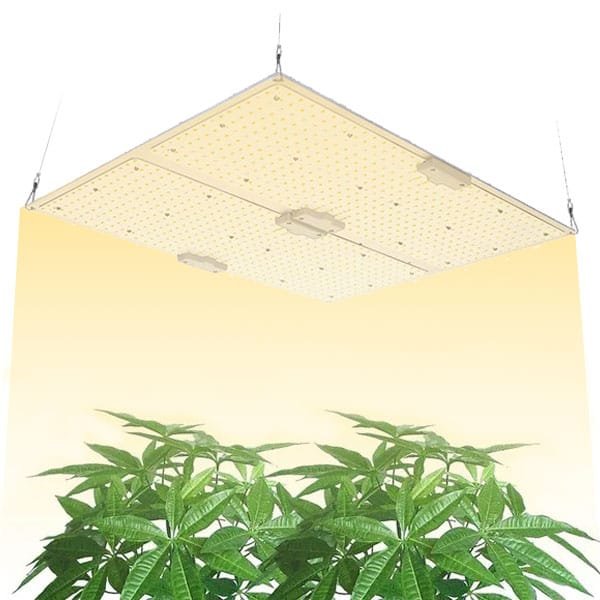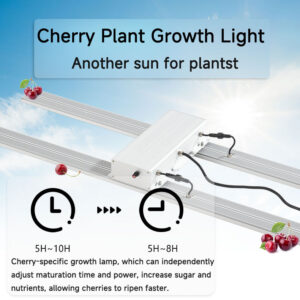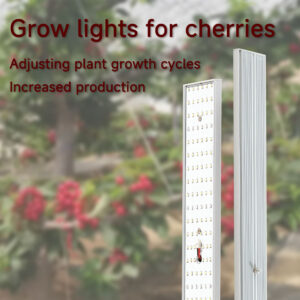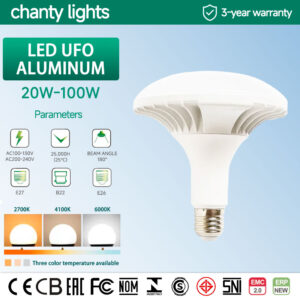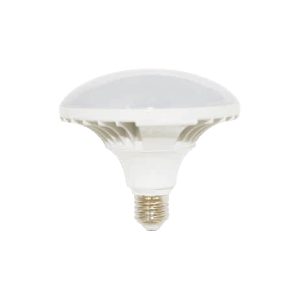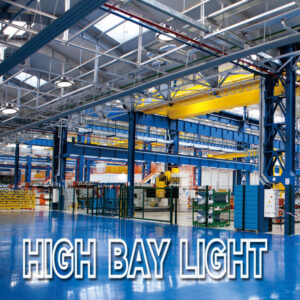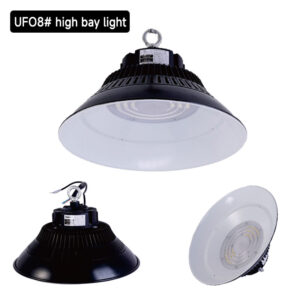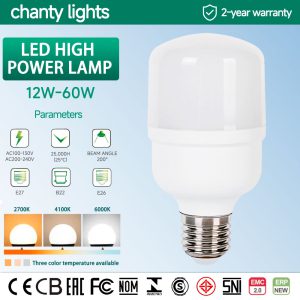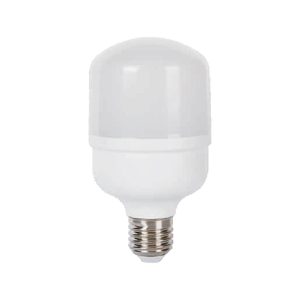Cannabis Plant Grow Light
The LED Grow Light Quantum Plate is a full-spectrum enhanced red color that is suitable for full-cycle growth and can be used for plants at all different growth stages. We can provide customized spectrum solutions upon request. Quantum board grow lights are more energy-efficient than traditional MH or HPS and can provide 1-10V dimming or knob dimming.
- Satisfaction Guaranteed
- No Hassle Refunds
- Secure Payments
Description
| Model No.: | CT-GROW-A-100~600 | Power: | 100W-600W |
| Voltage: | AC100-130V / AC200V-240V | Warranty: | 2 Years |
| Average Life: | 50,000H(25℃) | Means of Transport: | Ocean,Air |
| Production Capacity: | 50000pcs per month | Packing: | box with sticker |
| Delivery Date: | 15 days | Brand Name: | CHANTY |
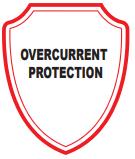
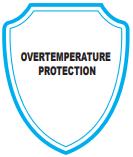
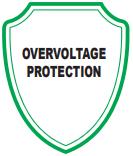

Products Features
- Full spectrum enhanced red LED light, suitable for full cycle growth, can be used for plants in all different growth stages.
- Unique cooling system: less heat, more growth
- The new lenses offer higher PAR values and deeper penetration
- Long lifespan: Average lifespan of about 50,000 hours
- Energy saving and environmental protection
- Operating temperature of the lamp: -10°C to 50°C
| ITEM NO | POWER | WEIGHT | IP CLASS | SIZE(mm) | MATERAIL |
|---|---|---|---|---|---|
| CT-GROW-A-100 | 100W | 2.2KG | IP20 | 240X300X40 | REFINED ALUMINUM |
| CT-GROW-A-200 | 200W | 4.3KG | IP20 | 240X600X40 | REFINED ALUMINUM |
| CT-GROW-A-400 | 400W | 6.6KG | IP20 | 480X600X40 | REFINED ALUMINUM |
| CT-GROW-A-500 | 600W | 9.8KG | IP20 | 720X600X40 | REFINED ALUMINUM |

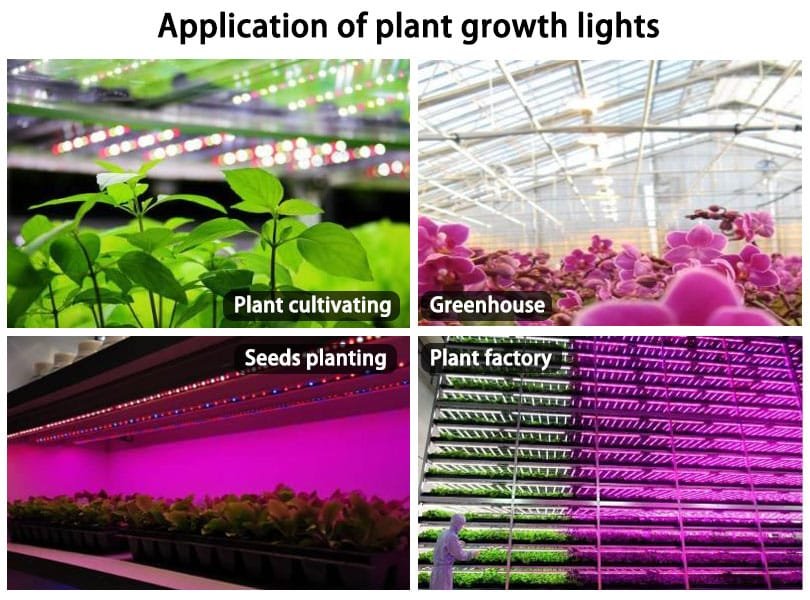
Effects of light on plant photosynthesis:
- Light intensity
In strong light, plant cells, organs, and individuals are short in shape; in weak light, they are relatively tall.
There are more types and contents of strong light pigments; there are fewer contents of weak light pigments and they are prone to yellowing. - Light quality —— Red light promotes morphogenesis and seed germination; far-red light has the opposite effect; blue light and ultraviolet light inhibit growth.
- Photoperiod ——the effects of long-day and short-day on plant development and flowering.
- Direction of light —— the movement and tropism of plants towards light, such as the phototropism of sunflowers.
Spectral distribution on plant photosynthesis
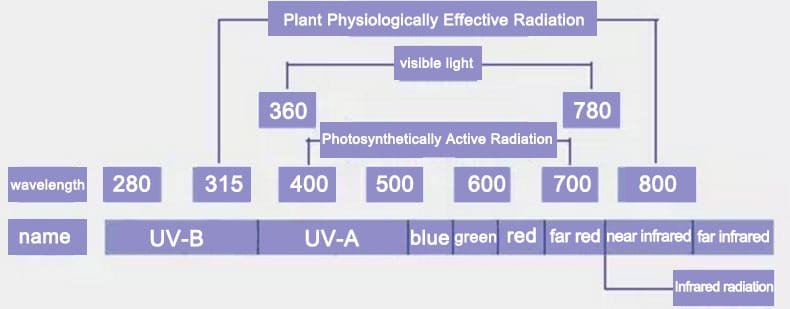
Effects of spectral range on plant physiology:
- 280 ~ 315nm: Minimal effect on morphology and physiological processes
- 315 ~ 400nm: Chlorophyll absorption is low, affecting the photoperiod effect and preventing stem elongation
- 400 ~ 520nm (blue): Chlorophyll and carotenoids have the largest absorption ratio and have the greatest impact on photosynthesis
- 520 ~ 610nm (green): The absorption rate of the pigment is not high
- 610 ~ 720nm (red): Chlorophyll absorption rate is low, which has a significant impact on photosynthesis and photoperiod effect
- 720 ~ 1000nm: Low absorption rate, stimulates cell extension, affects flowering and seed germination
- >1000nm: Converted into heat
Spectral absorption of each photosynthetic pigment
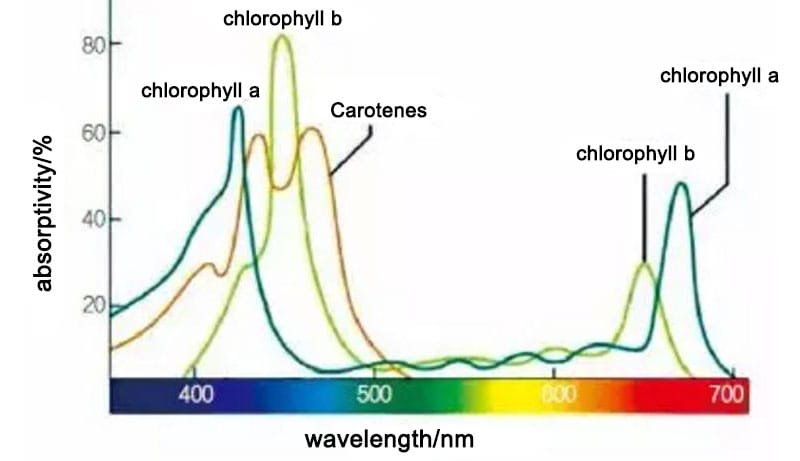
The two most important pigments for plant photosynthesis are chlorophyll and carotenes,the chlorophyll absorption spectrum is concentrated in the red and blue bands.
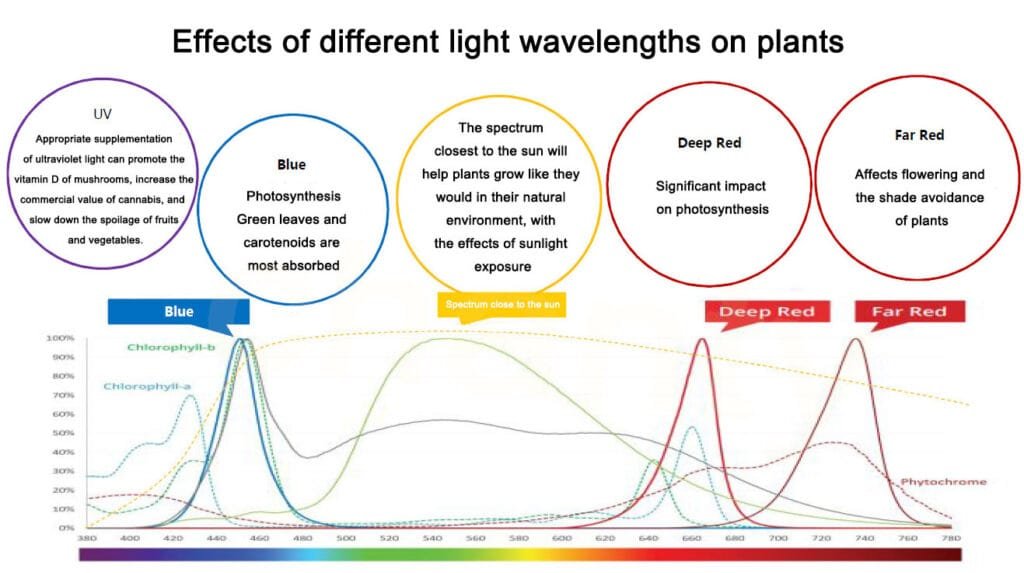
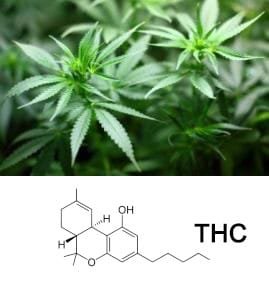
UV-B improves the commercial value of cannabis
An increasing number of countries, including the United States, Canada and many European nations, have legalized marijuana for both medical and recreational use.
THC (Δ9-tetrahydrocannabinol) is the best-known bioactive chemical in cannabis and is highly concentrated in the plant’s glandular hairs.
UV-B irradiation on cannabis can increase the concentration of Δ9-THC and the number of plant hair glands in cannabis leaves and flowers.
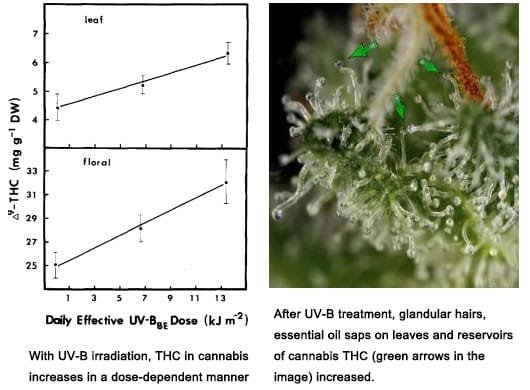
The plant growth light is not limited to plant growth
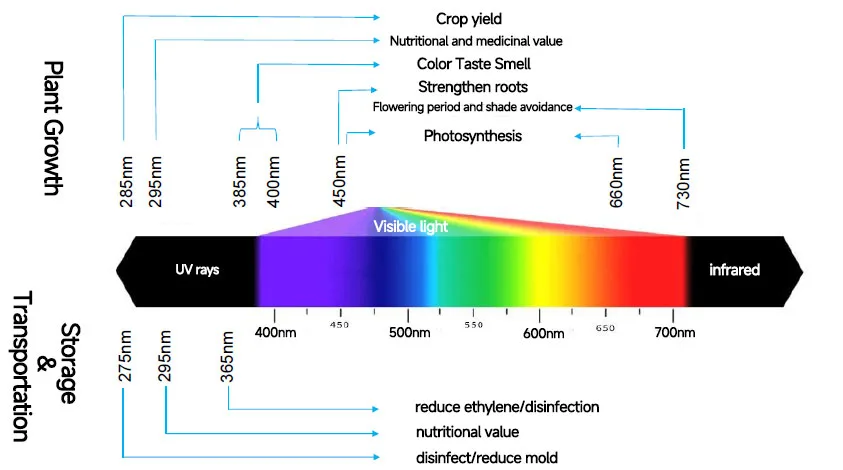
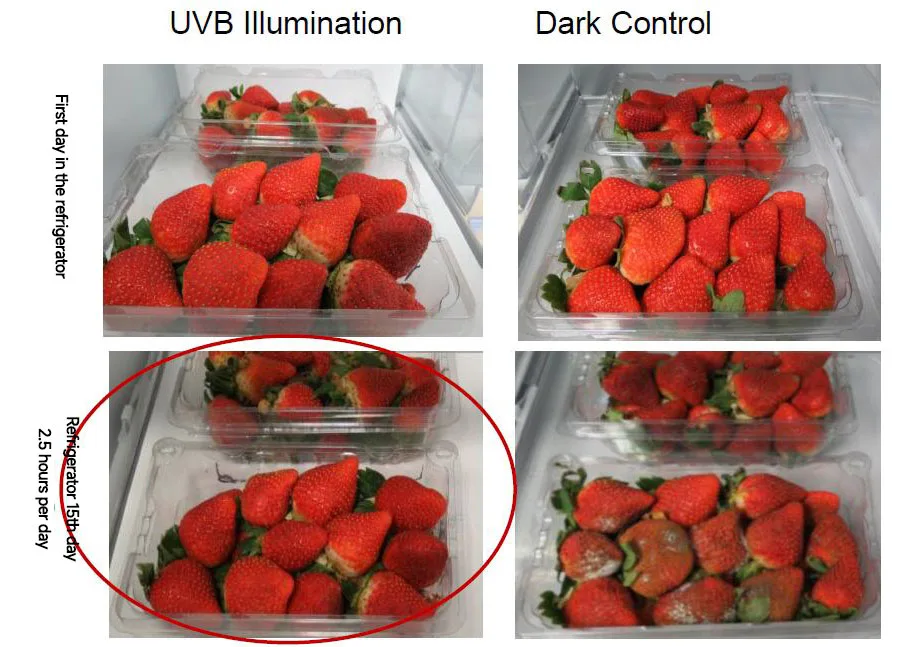
Effects of light quality on plants (excerpt)
| plant | The light they need | Effect |
|---|---|---|
| Pea sprouts | Red light | Promotes leaf area growth and β-carotene accumulation |
| Lettuce seedlings | Red light | Enhance the activity of antioxidant enzymes and increase the content of near-ultraviolet absorbing pigments to reduce the damage of near-ultraviolet light to lettuce seedlings |
| Strawberry | Red light | It is beneficial to increase the content of organic acids and total phenols in strawberries |
| Different plants | Blue light | Important factors affecting photosynthetic system activity and photosynthetic electron transfer capacity |
| Red pepper | UV-C | Slow down the pectin dissolution, quality loss and softening process of red pepper, thus significantly reducing the corruption rate of red pepper and extending the shelf life, and promoting the accumulation of phenolic substances on the surface of red pepper |
| Different plants | Far red light | The content of anthocyanins, carotenoids and chlorophyll decreased, while the fresh weight, dry weight, stem length, leaf length and leaf width of the plant increased. |
| Orchid | Red and blue light | 100% red light has the highest induction rate for orchid callus, and the callus growth effect is best when the red-blue light ratio is 3:1. |
| Chili | Red light and white light | Promoting the induction of pepper cotyledon callus |
| Garlic | Red light | Significantly promote the induction and proliferation of garlic callus |
| Chinese Yam | Blue light | The strongest effect on promoting callus differentiation |
| Oncidium | Red light | It is beneficial to the induction and proliferation of protocorm callus |
| Phalaenopsis, chrysanthemum, tobacco | Red light | The number of single buds increased significantly compared with the control fluorescent lamp |
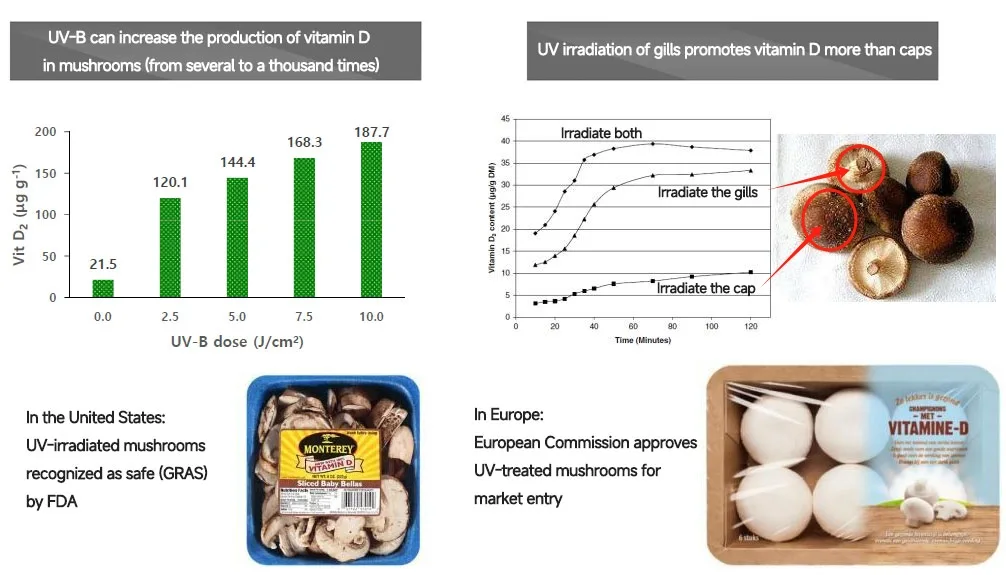
Our plant growth lights are more conducive to plant growth than ordinary white light LEDs
Plants grown using natural spectrum LEDs grow faster than those grown using conventional white LEDs and contain more flavonols, an antioxidant.
The results of this experiment show that when choosing lighting for indoor farm crop cultivation, the most important factor to consider is not color temperature and brightness, but the similarity between the spectral curve emitted by the LED and sunlight.
Our products are LED light sources that achieve the highest standards in the natural spectrum industry and are also the best solutions for plant growth.
What Can We Do For you ?
- 12 hours quick quotation for your urgent project
- Free professional suggestion according to lighting solution
- Customize seriver to let your idea come ture
- Detailed IES test report to lighting simulation
- High quality product which produced as IEC60598 standard
- Strong carton for product
- Short production time
- Delivery on time

